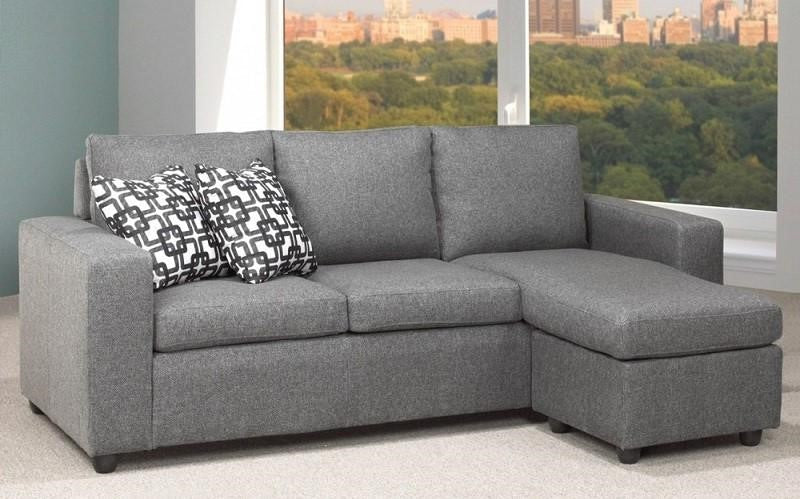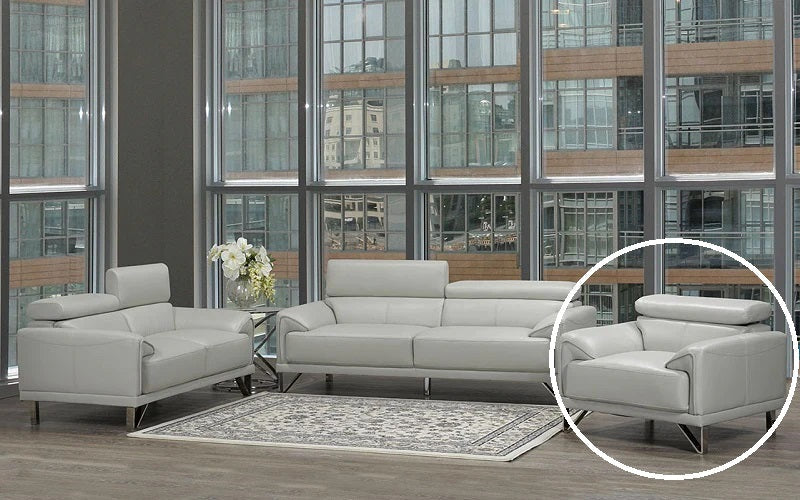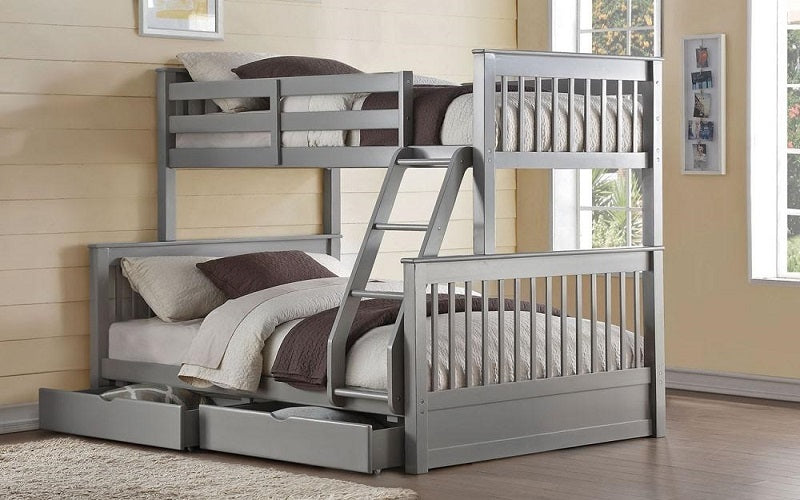The Complete Guide to Buying a Daybed: Style, Size, and Comfort

Daybeds are versatile pieces of furniture that can transform any room in your home. Whether you're looking to add a cozy spot for lounging, create a functional guest bedroom, or maximize space in a small apartment, a daybed offers a stylish and practical solution. However, buying a daybed can be overwhelming with so many options available. This guide will walk you through everything you need to know before making your purchase, from understanding the different types of daybeds to considering factors like size, material, and style.
What Is a Daybed? Understanding Its Functionality
A daybed is a hybrid piece of furniture that serves as a bed and a seating area. It typically features a mattress set into a three-sided frame, resembling a sofa. The versatile design allows it to function as a bed for sleeping or a sofa for lounging, making it an ideal choice for multi-purpose rooms, guest rooms, or small spaces.
Daybeds come in various styles, sizes, and materials, so it's essential to choose one that fits your needs and complements your home's decor.
Types of Daybeds: Finding the Right Fit for Your Space
There are several types of daybeds, each with unique features that cater to different needs. Understanding the types will help you select the best option for your space and lifestyle.
- Standard Daybeds: The most common type, standard daybeds, have a simple, three-sided frame that holds a twin-size mattress. These are perfect for small spaces or additional living room or office seating.
- Trundle Daybeds: Trundle daybeds feature a second mattress that can be pulled out from underneath the main bed. This makes them ideal for accommodating overnight guests without taking up extra space during the day.
- Canopy Daybeds: For a touch of elegance and luxury, canopy daybeds feature posts at each corner, allowing you to drape fabric over the top. This style adds a dramatic flair to any room and is perfect for creating a cozy, private nook.
- Outdoor Daybeds: Designed for outdoor use, these daybeds are made from weather-resistant materials like wicker, metal, or treated wood. They often come with cushions and can be a stylish addition to a patio, deck, or poolside area.
- Storage Daybeds: Storage daybeds offer built-in drawers or shelves beneath the mattress, providing extra storage space for bedding, clothing, or other items. This type is perfect for small apartments or rooms where storage space is at a premium.
Choosing the Right Size: Measuring Your Space
Before purchasing a daybed, measure the space where you plan to place it. Daybeds typically come in twin or full sizes, but some models may offer other dimensions.
- Twin Size Daybeds: Twin daybeds are the most common and measure 39 inches wide by 75 inches long. They are ideal for small spaces like guest rooms, home offices, or children's rooms.
- Full-Size Daybeds: Full daybeds, measuring 54 inches wide by 75 inches long, offer more sleeping space and are suitable for larger rooms or as a primary bed in a studio apartment.
When measuring your space, be sure to account for the additional room needed for any trundle bed or storage drawers and for comfortably walking around the daybed.
Material Matters: Selecting the Right Construction
The material of your daybed will affect its durability, comfort, and appearance. Here's a breakdown of common materials used in daybed construction:
- Wood: Wooden daybeds are sturdy and offer a timeless look that can suit various decor styles, from traditional to modern. Options like oak, pine, or walnut provide different finishes and textures.
- Metal: Metal daybeds, often made from steel or iron, are durable and can add a vintage or industrial touch to your space. They're also lighter and easier to move than wooden daybeds.
- Upholstered: Daybeds feature fabric-covered frames, offering a soft and cozy feel. They're available in various fabrics, such as linen, velvet, or leather, allowing you to match them to your room's decor.
- Wicker or Rattan: These materials are commonly used for outdoor daybeds but can also add a bohemian or coastal vibe to indoor spaces. Wicker and rattan daybeds are lightweight and often paired with cushions for added comfort.
Consider each material's durability, maintenance, and aesthetic appeal before making your decision.
Style and Design: Matching Your Decor
Daybeds come in various styles, so choosing one that complements your existing decor is essential. Here are some popular design styles to consider:
- Traditional: Daybeds often feature ornate details, such as carved wood or metal scrollwork, and have a timeless, elegant look. They're perfect for classic or vintage-inspired interiors.
- Modern: Modern daybeds are characterized by clean lines, minimalistic frames, and neutral colors. These are ideal for contemporary spaces that prioritize simplicity and functionality.
- Farmhouse: Farmhouse-style daybeds offer a rustic, cozy feel with wooden frames, distressed finishes, and charming details like x-back designs or slatted panels. They work well in country or cottage-themed rooms.
- Industrial: Industrial daybeds often feature metal frames with a raw, unfinished look. They pair well with exposed brick walls, concrete floors, and other industrial design elements.
- Bohemian: For a more eclectic and relaxed vibe, bohemian daybeds may incorporate wicker, rattan, or colorful upholstery. They're perfect for creating a laid-back, artistic space.
When selecting a daybed, consider how it will fit into your room's overall design and what style best reflects your personal taste.
Comfort Considerations: Choosing the Right Mattress and Cushions
Comfort is vital in daybeds, especially if you plan to use it for sleeping or long lounging sessions. Here's what to consider:
- Mattress Type: Daybeds typically use twin or full-size mattresses. The mattress you choose should provide the right balance of support and comfort, depending on whether the daybed will be mainly used for sitting or sleeping. Memory foam, innerspring, and hybrid mattresses are popular options.
- Mattress Thickness: The thickness of the mattress can affect both comfort and the overall look of the daybed. Thicker mattresses provide more comfort but may sit higher on the frame, which could impact the aesthetic, especially if the daybed has a trundle or storage underneath.
- Cushions and Pillows: Consider adding decorative cushions and pillows to make your daybed comfortable for lounging. These not only enhance comfort but also allow you to personalize the look of your daybed. Choose cushions that complement your decor, and consider different textures and patterns for added visual interest.
Budget Considerations: Getting the Best Value for Your Money
Daybeds come in various prices, depending on material, brand, and additional features such as trundles or storage. Here's how to get the best value for your money:
- Set a Budget: Before you start shopping, determine how much you're willing to spend on a daybed. This will help you narrow down your options and avoid overspending.
- Compare Prices: Shop around and compare prices from different retailers. Remember to consider additional costs, such as delivery fees or the cost of a mattress and bedding, if these are not included.
- Look for Sales and Discounts: Look for sales, discounts, and promotional offers. Many furniture stores offer seasonal sales, especially around holidays, where you can find great deals on daybeds.
- Consider Long-Term Investment: While it may be tempting to choose the cheapest option, consider the long-term value of your purchase. A well-made daybed that suits your needs and style will likely provide better value over time than a more affordable model that may wear out quickly or not meet your comfort requirements.
Assembly and Maintenance: What to Expect
Before purchasing a daybed, consider the assembly and maintenance requirements:
- Assembly: Most daybeds require some assembly, which may vary in complexity depending on the model. Check if the daybed has clear instructions and if you need any special tools. If you're not comfortable with DIY assembly, consider hiring a professional.
- Maintenance: Different materials have different maintenance needs. For example, wooden daybeds may require occasional polishing, while metal frames might need to be checked for rust. Upholstered daybeds might need regular cleaning to keep the fabric looking fresh. Consider the care requirements of each material when making your decision.
Conclusion: Finding Your Perfect Daybed
Buying a daybed is an investment in your home's style and functionality. By considering the type, size, material, style, comfort, and budget, you can find the perfect daybed that meets your needs and complements your decor. Whether you're looking to create a cozy reading nook, a stylish guest room, or a functional seating area, the right daybed can enhance any space in your home.
Take your time to explore the options, measure your space carefully, and choose a daybed that fits your aesthetic and provides the comfort and versatility you need. With this comprehensive guide as your shopping companion, you can make an informed decision and enjoy the many benefits of owning a daybed.




